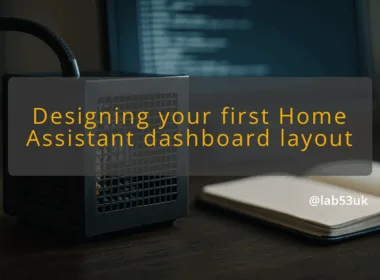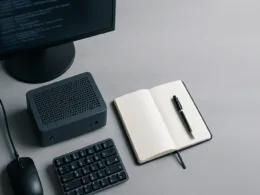Integrating AI Agents in Microsoft Teams for Enhanced Collaboration
I use AI Agents in Teams to cut the busywork and keep meetings honest. This guide shows how I set them up, how I fold them into my task management, and the small changes that actually save time. I focus on practical steps and prompts you can copy straight into Teams.
Getting Started with AI Agents in Microsoft Teams
Overview of Microsoft Teams and AI Agents
Microsoft has added agent features to Teams that can join meetings, create agendas, take notes and extract action items. The Facilitator agent is one of the clearer examples: it can generate real-time notes, surface agendas and pull out follow-ups from chat or meeting audio. Microsoft documents the Facilitator feature and how it behaves. Industry coverage describes how Microsoft intends these agents to move Copilot from a personal assistant into collaborative workflows. Computerworld summarised the direction and examples.
Setting Up Your Teams Environment
Start by checking licensing and feature availability for your tenant. Some agent features require Copilot or specific Teams builds. In the admin centre, confirm the Teams client is up to date and that meeting policies permit apps and bots. I follow these steps:
- Confirm the Teams client version and update if needed.
- Check Copilot/agent licensing in Microsoft 365 admin centre.
- Enable apps and bots in meeting policies (allow third-party or Microsoft agents as appropriate).
- Set privacy and data policies so transcripts and notes are stored where you want them.
If you cannot enable an agent centrally, test locally in a single user account first. That avoids noisy rollouts.
Integrating AI Agents into Your Workflow
Keep the first trial small. Choose one recurring meeting and add the Facilitator or agent to it. Use the agent to draft the agenda before the meeting. During the meeting, watch how it captures decisions and who it assigns as owners. After one or two runs, tweak prompts and meeting options.
Practical prompt examples I use:
- “Draft a meeting agenda with three items and estimated times for a 30-minute meeting.”
- “After this meeting, list decisions, action items and owners with suggested due dates.”
Pin the agent to the meeting chat. Save the draft agenda as a message so the agent can reference it. If an agent suggests follow-ups, check the suggested owners before turning them into Planner tasks.
Enhancing Task Management with AI Collaboration
Automating Routine Tasks
Automation is the low-hanging fruit. I connect agent outputs to task systems rather than leaving them as chat messages. Typical flow I use:
- Agent extracts action items post-meeting.
- I review and confirm owners.
- A short Power Automate flow creates Planner or To Do tasks with the owner and due date.
Keep the flow simple. Create tasks only after manual confirmation to avoid noise. Use tags or a project prefix in task titles so they are easy to filter later. If you want a single-click step, add a Teams message action that sends a confirmation back to the agent before the flow runs.
Using AI for Document Creation
Agents can draft documents from short prompts and meeting notes. My steps for safe, repeatable drafts:
- Export the meeting notes or pin the agent summary.
- Ask the agent: “Create a one-page project brief from these notes with background, objectives, next steps and owners.”
- Read the draft and correct factual errors.
- Convert the draft to a Word doc or SharePoint file and save with versioning.
Keep a checklist for verification: dates, owner names, numbers. I never publish a draft without a quick sanity check. Treat the agent like a skilled apprentice, not the final author.
Leveraging AI for Meeting Management
Use the Facilitator for the heavy meeting chores: agenda prep, live notes, time prompts and a tidy post-meeting summary. Practical setup:
- For recurring meetings, place a standard agenda template in meeting chat.
- Let the agent pre-fill the template from the last meeting’s actions.
- During the meeting, ask the agent to highlight open items and call out decisions when they happen.
- After the meeting, export the agent’s summary and run the short automation above to create tasks.
A few behaviours to watch for: agents can miss context or misassign owners if names are similar. I train prompts to include full names and roles. I also keep a short “data hygiene” note pinned in chat that says how to format dates and owners.
Best Practices for Maximising Productivity with AI
- Start small and measure. Run the agent on one meeting stream for a month before a wider rollout.
- Use explicit prompts. Short, specific commands produce predictable outputs.
- Protect sensitive data. Restrict which chats and meetings allow agent access.
- Verify outputs. Always check names, dates and commitments before turning notes into tasks.
- Limit automation steps until the agent is stable. Manual confirmation buys trust.
Real-World Examples of AI in Action
- Agenda automation: I use the agent to convert a two-line meeting purpose into a five-point agenda with timings. That saves 10–15 minutes per meeting.
- Chat summarisation to tasks: After a 20-message chat, the agent pulls three action items and I run a single Power Automate approval to create Planner tasks.
- Document draft: I paste meeting notes and prompt the agent for a project brief. Editing time drops to 15 minutes from 45.
Example prompt I use verbatim:
“From the pinned meeting notes, create an actions list with owner, one-sentence task and a suggested due date one week from now. Mark uncertain owners with [confirm].”
Concrete prompts like that make outputs easier to parse automatically.
Takeaways
- Treat AI Agents in Teams as assistants, not decision makers. I use them to reduce admin, not to replace judgement.
- Start with one meeting and one automation flow. Expand once the outputs are consistent.
- Use strict prompts and a short verification checklist. That keeps task management tidy.
- Protect sensitive channels and check licences before enabling agents.
If you follow those steps, Agents will cut repetitive work and improve follow-through. The result is fewer missed actions and clearer meeting outcomes.









